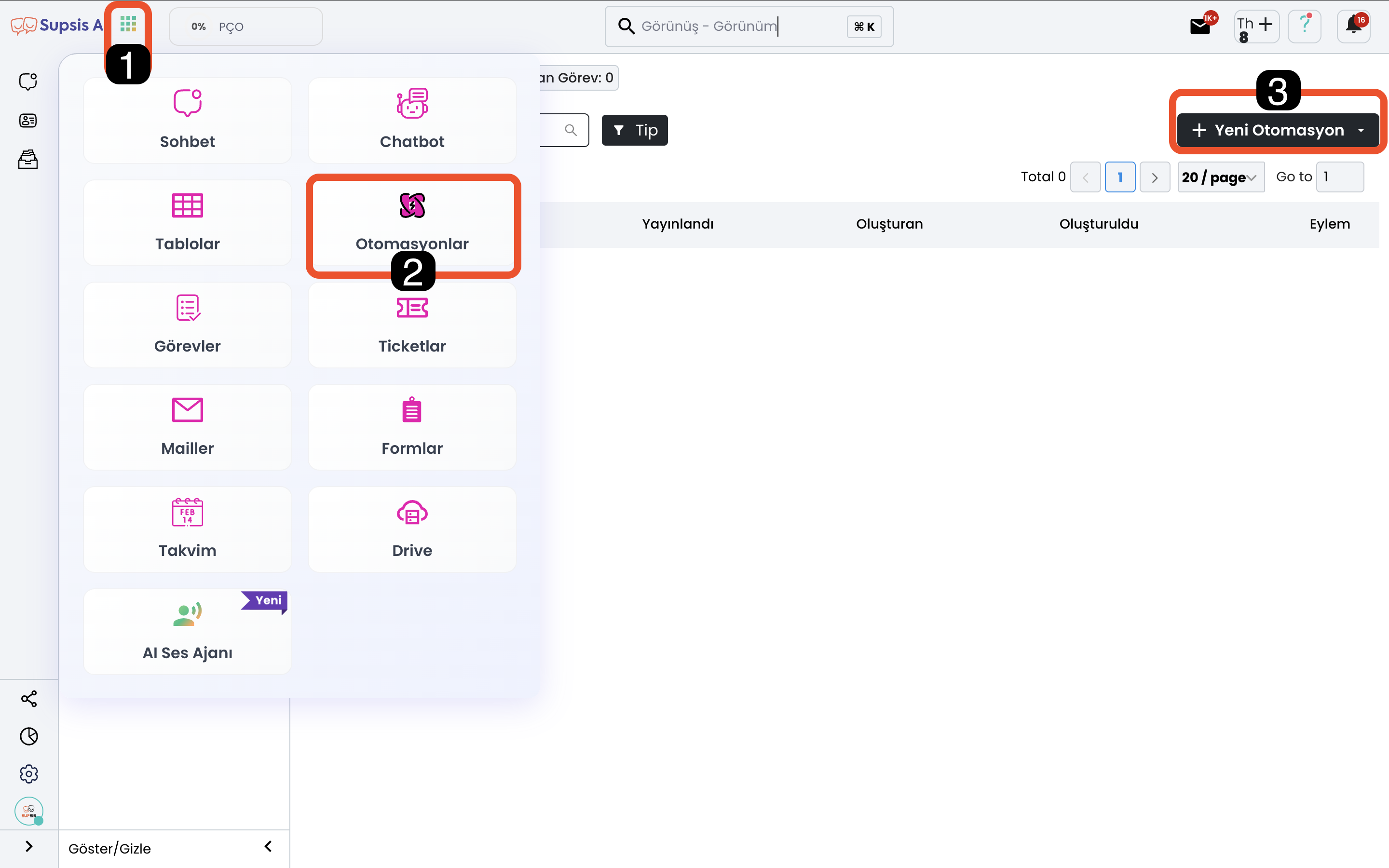Automation
What is Automation
Automation is a structure that enables the automation of specific operations, repetitive tasks, or marketing processes, and ensures that business processes are managed more efficiently by eliminating human errors and making business processes more sophisticated.
Supsis has three different automation triggers. The first of the triggers is event-based; This type of automation is automatically triggered when a specific event occurs in your Supsis panel. The second is timer-based, these automations provide specific operations automatically at certain times according to the periods you determine. The third is webhook-based automations, this type of automation is triggered by HTTP requests sent from external systems to Supsis.
Thanks to these automation types, your system automatically processes both according to the internal dynamics in your Supsis panel and according to requests from external systems.
How Does Automation Work?
Supsis automations have data only from the current event or the sent Webhook request at the moment they are triggered. This means that at the beginning of the automation, it has limited but directly related information to the event that triggers the automation.
When automation is executed, the following steps are followed:
-
Data Source
The event that triggers the automation (such as creating a record) or a Webhook call from an external system provides some information to the automation. You can provide operations by returning the incoming information in the automation using this information. -
Query Capability
The automation can make queries on the system using this information that comes during triggering. For example:- Records belonging to a specific table can be queried and processed.
- By querying the data within the modules, broader information can be reached and this information can be processed.
-
Process and Decision
Based on the obtained query results or data from the event, conditions are checked and determined actions (such as sending notifications, updating records, creating new records, etc.) are automatically applied.
Thanks to this structure, automations are not limited only to the data presented at the beginning; at the same time, they can perform dynamic, condition-based and comprehensive operations by making in-depth data queries in the system.
Automation Creation Steps

- Access to Modules
- Access to Automation Module
- Create Automation
After pressing the create new automation button, select the appropriate automation type.